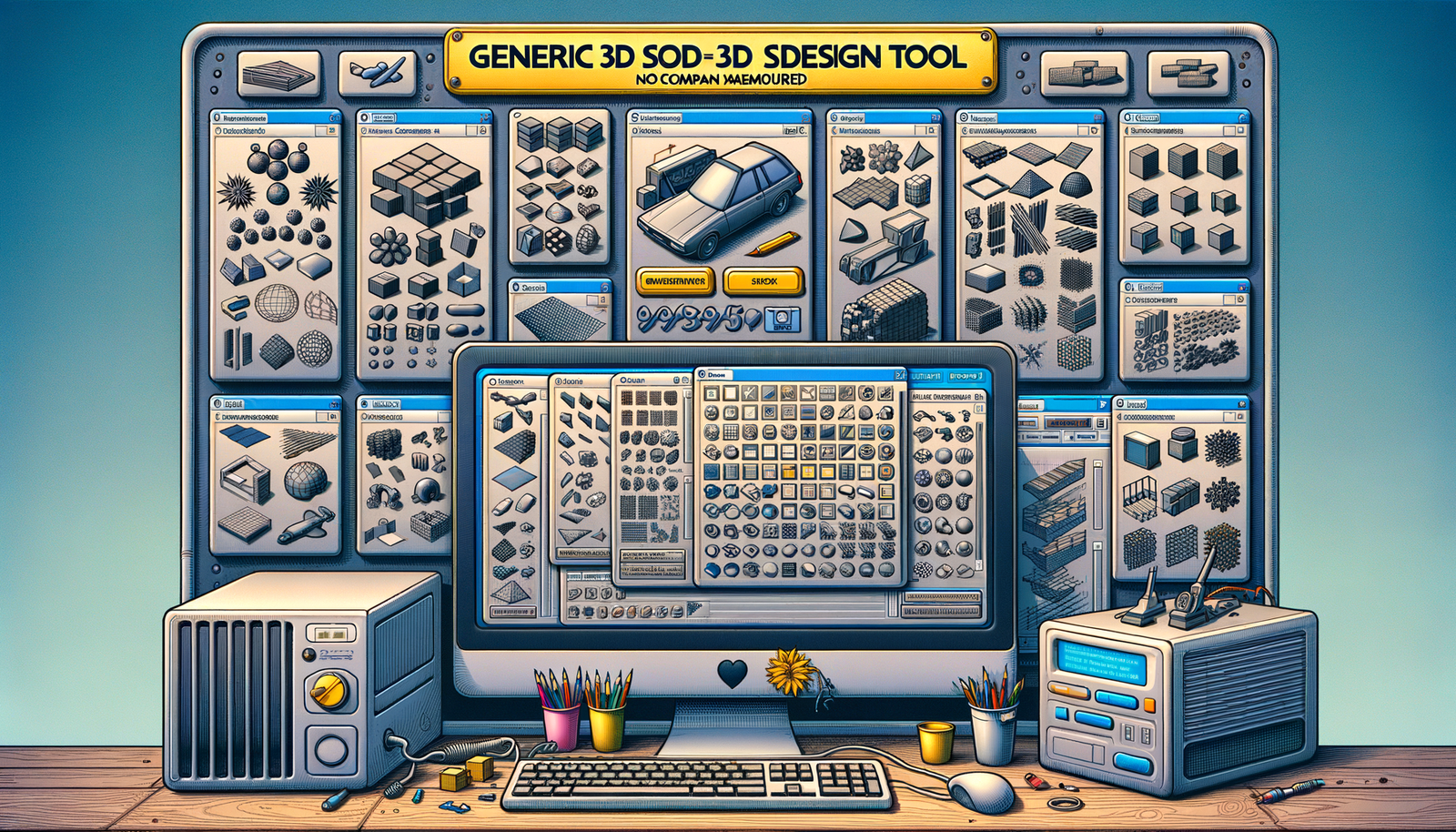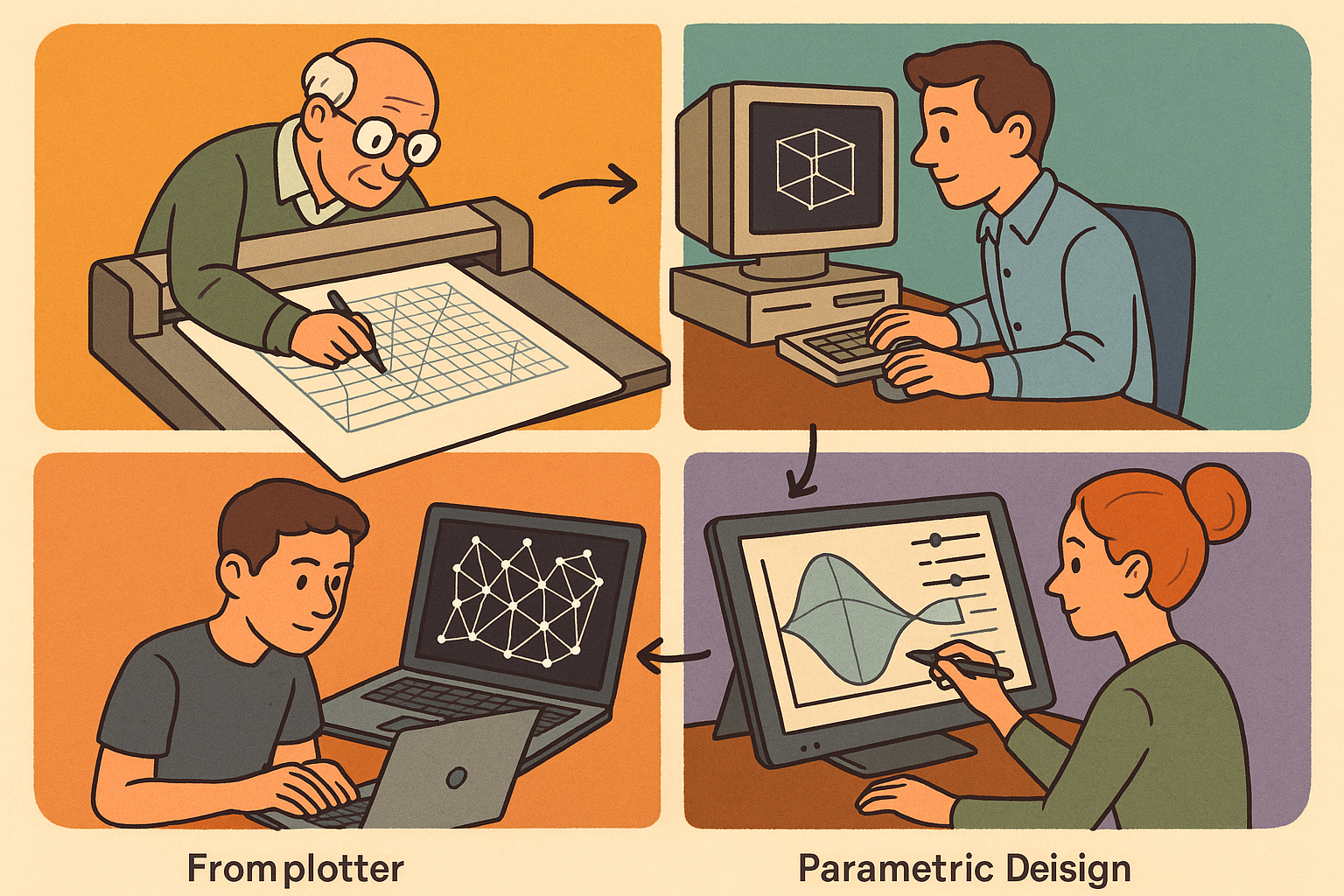Your Cart is Empty
Customer Testimonials
-
"Great customer service. The folks at Novedge were super helpful in navigating a somewhat complicated order including software upgrades and serial numbers in various stages of inactivity. They were friendly and helpful throughout the process.."
Ruben Ruckmark
"Quick & very helpful. We have been using Novedge for years and are very happy with their quick service when we need to make a purchase and excellent support resolving any issues."
Will Woodson
"Scott is the best. He reminds me about subscriptions dates, guides me in the correct direction for updates. He always responds promptly to me. He is literally the reason I continue to work with Novedge and will do so in the future."
Edward Mchugh
"Calvin Lok is “the man”. After my purchase of Sketchup 2021, he called me and provided step-by-step instructions to ease me through difficulties I was having with the setup of my new software."
Mike Borzage
Design Software History: The Evolution of SOLIDWORKS: From Visionary Beginnings to Modern Design Powerhouse
September 26, 2024 4 min read


The Origins and Founding of SOLIDWORKS
Background and Vision
The origins of SOLIDWORKS trace back to the early 1990s when a group of visionaries aimed to revolutionize the Computer-Aided Design (CAD) industry. The primary vision was to create a 3D CAD software that was powerful yet accessible, breaking away from the expensive and complex systems that dominated the market. At the heart of this ambition was Jon Hirschtick, a former MIT blackjack team member, who envisioned an affordable and intuitive CAD software for the average engineer.
Initial Development
The initial development phase of SOLIDWORKS was marked by several challenges. One of the most significant hurdles was to develop a robust CAD software for the Windows platform, which was relatively new at the time. Unlike many existing CAD systems that ran on Unix workstations, SOLIDWORKS was designed from the ground up to be user-friendly and operate on more broadly accessible hardware. Achieving this balance between power and usability required innovative thinking and a dedicated team of developers.
Early Funding and Support
Early funding and support played a critical role in the development of SOLIDWORKS. Initial funding came from venture capitalists who believed in Hirschtick's vision. Key among these investors was Atlas Venture. Early partnerships and collaborations with industry leaders provided the necessary technological and strategic support. These alliances allowed SOLIDWORKS to incorporate advanced features and stay ahead of the competition.
Pioneering Features and Technological Innovations
Introduction of Parametric Feature-Based Modeling
One of the pioneering features that set SOLIDWORKS apart was the introduction of parametric feature-based modeling. This technology allowed designers to define parameters and relationships for different features of a model. Unlike traditional CAD systems, where each feature had to be manually adjusted, parametric modeling enabled automatic updates when parameters were changed, significantly enhancing efficiency and precision. This was a substantial leap from existing technologies that were more static and less adaptable to changes.
User-Friendly Interface
Another groundbreaking aspect of SOLIDWORKS was its focus on developing an intuitive and user-friendly interface. Traditional CAD systems were often criticized for their steep learning curves and complex interfaces. In contrast, SOLIDWORKS aimed to be accessible to engineers and designers of varying skill levels. Its interface was designed to be straightforward and easy to navigate, which was a key factor in its rapid adoption and rising popularity in the industry.
Integration and Interoperability
From its early days, SOLIDWORKS emphasized the importance of integration and interoperability between different CAD systems. This approach not only facilitated collaboration across different platforms but also allowed for smoother transitions and integrations with other software tools. Key partnerships and software integrations were established to expand its functionality. These collaborations ensured that SOLIDWORKS could be seamlessly incorporated into existing workflows, making it a versatile tool for a wide range of applications.
Acquisition by Dassault Systèmes and Subsequent Growth
Acquisition Details
In 1997, SOLIDWORKS was acquired by Dassault Systèmes, a global leader in 3D design software and Product Lifecycle Management (PLM) solutions. This acquisition marked a significant milestone in the history of SOLIDWORKS. With the backing of Dassault Systèmes, SOLIDWORKS gained access to additional resources, expertise, and a broader market reach. The acquisition allowed for accelerated development and the incorporation of advanced features that further cemented SOLIDWORKS' position as a leader in the CAD industry.
Expansion of Product Line
Post-acquisition, SOLIDWORKS underwent substantial growth and development. New features and modules were introduced to enhance its capabilities. These included advanced simulation tools, data management solutions, and cloud-based services. The expansion of the product line made SOLIDWORKS a comprehensive solution for design, simulation, and manufacturing. The development of key products such as SOLIDWORKS Simulation, SOLIDWORKS PDM (Product Data Management), and SOLIDWORKS 3DEXPERIENCE further solidified its standing in the market.
Market Penetration and Adoption
The strategies employed to capture market share and expand the user base included aggressive marketing campaigns, competitive pricing models, and strong customer support systems. Focused efforts were made to demonstrate the value of SOLIDWORKS in various industries, from automotive and aerospace to consumer products and medical devices. The software's ability to streamline design processes and improve productivity resonated with professionals, leading to widespread adoption and notable implementations across different sectors.
SOLIDWORKS in the Modern Era
Current Features and Capabilities
Today, SOLIDWORKS is renowned for its extensive features and capabilities. The software offers a comprehensive suite of tools for design, analysis, and manufacturing. Key features include advanced simulation capabilities, robust data management solutions, and integration with cloud-based platforms. SOLIDWORKS has continued to evolve, incorporating cutting-edge technologies such as generative design, real-time simulation, and enhanced collaboration tools. These advancements have made SOLIDWORKS an indispensable tool for modern design and engineering.
Community and Ecosystem
The SOLIDWORKS community and ecosystem have played a crucial role in its development and support. Active user forums, online communities, and annual events like SOLIDWORKS World provide platforms for users to share knowledge, seek support, and collaborate. The contributions of third-party developers have further enriched the software, offering a wide range of plugins and add-ons that extend its functionality. The integration with other software tools and platforms has created a versatile ecosystem that caters to diverse needs and applications.
Future Directions
Looking ahead, SOLIDWORKS is poised to continue its trajectory of innovation and growth. Potential areas of development include the integration of artificial intelligence and machine learning, which could revolutionize design processes and enhance predictive capabilities. Emerging technologies such as virtual reality (VR) and augmented reality (AR) are expected to play significant roles in the future of design and engineering. As SOLIDWORKS continues to adapt to these advancements, it remains committed to providing powerful and accessible solutions for designers and engineers worldwide.
Also in Design News

Design Software History: From Plotters to Procedural Intent: A Technical History of Generative and Parametric Design Software
January 04, 2026 13 min read
Read More
Semantic Meshes: Enabling Analytics-Ready Geometry for Digital Twins
January 04, 2026 12 min read
Read MoreSubscribe
Sign up to get the latest on sales, new releases and more …



